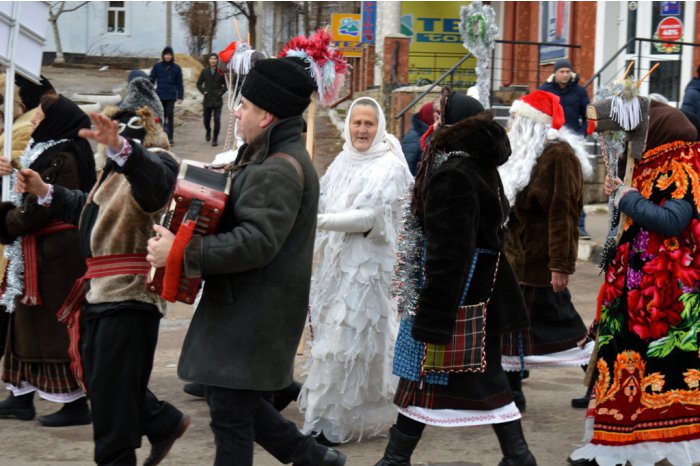Discover Moldova with #MOLDPRES: Winter customs and traditions which turn holidays nicer and more attractive
20:53 | 16.12.2024 Category: Tourist Moldova
The winter holidays are nearing. Our souls are full of joy. The winter holidays have a special place in the Moldovans’ hearts, with all kinds of popular traditions, customs, one nicer than the other. The Moldovan people have rich traditions, which give their culture a unique character. The Moldovans’ winter holidays start with Saint Andrew (13 December) and end with Saint John the Baptist (20 January).
It is about a combination of traditions and customs – some of which coming from the pre-Christian period - with Christian religious holidays. These holidays give a special magic to the cold season, bringing joy, happiness, as well as mystery and spiritual feelings. Each of us is waiting for these nice holidays with all the heart. People meet, spend the time together, sing carols and say congratulations. The winter holidays are full of special magic.
Saint Nicholas (19 December), celebrated by the Orthodox Christians, regarded as the protector of the poor people. Saint Nicholas is the one who, while turned into Santa Claus, brings presents to children.
Christmas (25 December). The Birth of God is the most important holiday of the winter, and before this holiday there is the Christmas Eve. In the morning of this day, groups of children go from home to home and sing carols, for which they receive, in exchange presents.
Christmas Tree The symbol of winter holidays is the much desired Christmas Tree. This tree existed in the Moldovan traditions much before the Christian age. The fir tree is the most important tree in the Romanian customs and it is present at the most important events in the life of a man: Baptizing, Marriage and Burial
Singing carols. A quite well-known custom is the signing of carols. The signing of carols starts on 24 December and can continue 2 or 3 days. Groups of children, adults, elderly people, only girls, only boys, young married people, etc., depending on the ethnographic area, usually participate in signing carols. The signing of carols takes place in yards of those who receive carol singers, in the home, or under the window.
The Goat. This customs lasts, as a rule, beginning with the Christmas till the New Year. The masks which were evoking Bible personages are replaced by the mask of a single animal, the name of which varies from one region to another.
The New Year (31 December — 1 January). This is practically the most expected winter holiday. Researchers see in the people’s customs, held on this period, rituals of symbolical renewing of the world, of driving away the evil spirits or of divination.
The Star. Another custom which has lost its significance during time is walking with the ‘’star’’ – old custom recorded at all Christian nations. It was meant to announce the people about the Birth of Christ.
The New Year’s Eve is the crown of the holidays, especially of the feasts – a lay holiday, full of rich feasts with special entertainments.
The Christmas (7 January, old style) People should fast for six weeks before this holiday. At the Christmas feast, people eat cakes, grape leaf rolls, meat jelly, pork sausage and drink red wine.
Saint Basil (The Old-style New Year, 14 January). According to the tradition, on the eve of Saint Basil, groups of waits, with masks on faces, go from home to home and congratulate people on the New Year and St. Basil.
The Epiphany (Baptism of the Lord, 19 January). This is a religious holiday, during which priests bless the water in churches and people take it home and sprinkle with it their households, objects, animals.
The cycle of winter holidays ends on 20 January, with the holiday of Saint John the Baptist, who baptized Lord Jesus Christ in the waters of Jordan.
Correspondent: Lilia Grubii














